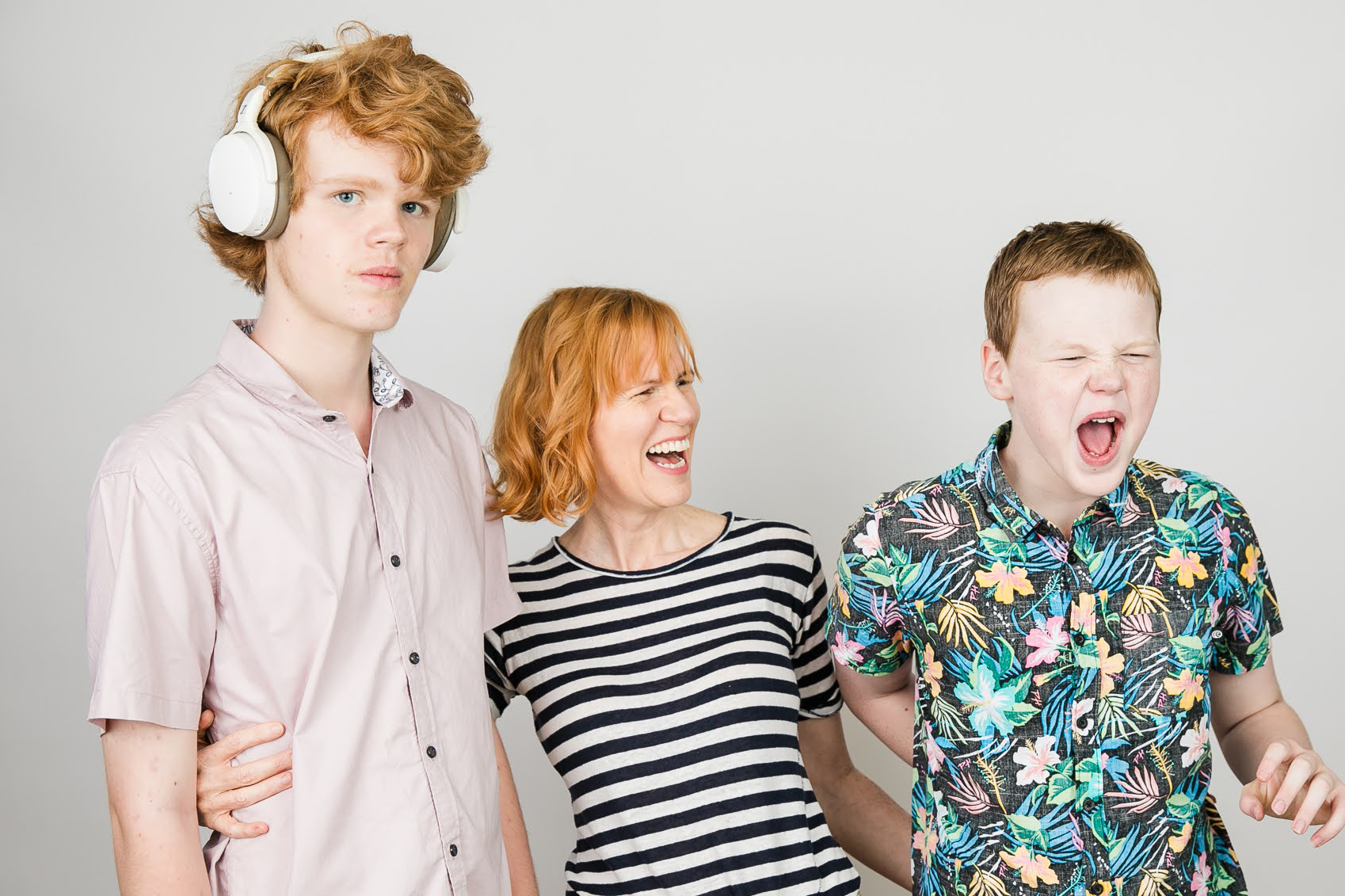Benefits of trampolining with Springfree

We all know how fun (and tiring!) it can be to bounce on a trampoline.
By keeping kids active and entertained, trampolining is hugely popular with many children, particularly those on the autism spectrum. In this article, we’ll take you through the benefits of trampolining for people with autism, and how one mum of three autistic boys has seen enormous improvements in her children's health and wellbeing thanks to their Springfree trampoline:
- What are the benefits of trampolining?
- What about trampolining as part of therapy?
- A family’s perspective
- Your next steps
What are the benefits of trampolining?
Trampolining is a fan-favourite activity for both neurotypical and neurodivergent children. But for those on the autism spectrum, it has a range of health and wellbeing benefits in addition to being fun:
Emotional regulation
Many autistic people experience emotional dysregulation more frequently and extremely than their neurotypical peers. Whether it’s sensory overload, a long day of socialising or a bad day at school, people with autism can be intensely triggered by certain environments and situations, which can sometimes lead to a meltdown and contribute to burnout.
Many autistic people also ‘stim’ or practise self-soothing behaviours, such as rocking or swaying backwards and forwards, flapping their hands, fidgeting with an object or tapping on a surface. These repetitive actions are a crucial means of emotional regulation, particularly if they have verbal or other communication challenges that prevent them from expressing and talking through intense emotions.
By simply jumping on a trampoline, an autistic person can address their feelings of dysregulation and desire to stim in a safe and independent way. This simple action encourages both self-regulation and stimming in a fun and supportive environment.
Social and communication skills
Many autistic people face social and communication challenges to different extents. For someone who has great difficulty socialising, or has little to no verbal communication skills, trampolining can be incredibly beneficial.
Bouncing on a trampoline is a fun way for an autistic child to have vital interactions with their neurodivergent and neurotypical peers. Sharing a trampoline with others also encourages children to share, take turns, engage in collaborative and cooperative play and even communicate their feelings and concerns clearly and respectfully.
Sensory input, balance and coordination and overall fitness
Trampolining can also address physical health challenges associated with autism. Many autistic children struggle with balance, coordination and interpreting impulses from their muscles and joints. This may mean they are hypersensitive or hyposensitive to movement and touch.
Bouncing on a trampoline can assist an autistic child in improving their strength, balance, ability, speed and coordination, vital skills which support their overall development. And with all that bouncing, children are bound to improve their general fitness, too. You’ll be hard-pressed to find a more enjoyable way for your child (and even you) to exercise.
.png)
What about trampolining as part of therapy?
It might seem impossible for something as fun as bouncing on a trampoline to have so many benefits. But it does! Even therapists and allied health professionals, such as occupational therapists, are using exercises and activities involving a trampoline to support an autistic person in achieving developmental goals.
Trampoline activities may be used to address the following:
- Gross and fine motor skills
- Balance and coordination
- Social and communication challenges
- Mood and emotional problems
- General health and fitness
With the support of a qualified therapist or health professional, an autistic person can use trampolining to work towards specific goals related to the challenges above. This can lead to much faster improvements and ensures that the autistic person remains safe and supported.
You may even be able to fund trampoline activities through a NDIS plan. Please refer to your individual plan and contact your provider to determine if you or your child is eligible.

A family's perspective
Kathrine Peereboom is an autism and disability advocate and the proud mother to three boys on the autism spectrum. Trampolining has been incredibly beneficial for her children in improving their confidence, mood and overall fitness. We asked Kathrine to explain these benefits in more depth and offer her advice to other autism families:
Kathrine, how did you first discover the benefits of trampolining for your boys?
Relocating our family to the vibrant Gold Coast was both exciting and challenging. One of the pressing concerns was finding suitable therapy services for my boys, who had been on therapy wait lists for years. I was determined to provide them with the support they needed to thrive, and that's when I stumbled upon the concept of trampolining.
As I delved into my research, it became clear that trampolining could offer a unique and effective approach to addressing various physical and developmental challenges. Unlike the casual bouncing my boys enjoyed at home, trampolining in therapy is a structured and guided process that combines the benefits of physical activity, sensory integration, and skill development.
The benefits of trampolining for autistic children are endless, from improving balance and coordination to emotional regulation. What are some of the improvements you’ve seen in your boys since they started trampolining?
I never expected the wide range of benefits that trampolining has provided to my three boys to be honest.
I have seen improved motor skills development, coordination, and body awareness all whilst increasing muscle strength and tone. Sleeping improvements on these days are clearly noticeable and social connections and rapport with their therapists and coaches has been incredibly special to watch. Weight management has also been significant as two of my boys battle very different eating disorders.
As a parent, I try to provide as many opportunities for my children’s progress and growth. The transformation I witnessed is nothing short of incredible. Over time, I have observed improvements in their confidence, overall engagement and now an impressive long list of skills. When you are attending therapy at 7am in the winter and the boys are running to the trampolines, you know you’re doing something right.
What has surprised you the most about the positive impacts of trampolining?
The pure, continuous enjoyment along with enhanced communication. I don’t think we’ll ever forget hearing Oliver say “mum” for the first time or Tyler say “go” in ready, set, go! There wasn’t a dry eye in the room. I didn't anticipate that trampolining would have such a positive effect on my boys' communication skills.
I notice that after each session my boys seem calmer and more centred. The rhythmic bouncing appears to have a soothing effect on their nervous systems, helping them manage their stress and anxiety.
Trampolining encourages my boys to explore their creativity in ways I hadn't foreseen. The therapists often incorporate imaginative games, the boy’s favourite songs and activities that required problem-solving and creative thinking. This allows my boys to step outside their comfort zones and engage in play that sparks their imaginations. I am so proud to witness how the trampolining sessions nurture their cognitive and imaginative abilities alongside their physical development.
Trampolining unexpectedly became a source of family bonding. While my initial focus was on the benefits for my boys, my husband and I find ourselves cheering them on as they try to master new skills and occasionally relaxing with a cup of coffee! Unheard of in my world. These shared moments of emotional connection, support and laughter strengthen our family connections and provide a unique opportunity for us to engage in a shared activity that we all enjoy.
Trampolining services have not only bridged the gap created by therapy wait lists, but have also provided my boys with a nurturing environment where they can thrive and grow.
How will having a Springfree trampoline at home support the health and wellbeing of your family?
Having a Springfree trampoline at home promises to be a game-changer for our family's health and well-being. We have had trampolines in the past, however, the Springfree trampoline is the highest quality we’ve ever owned. My boys are strong and at times clumsy and the sturdy trampoline provides reassurance, as it is the only trampoline that meets the Australian Safety Standards and has a 10-year warranty on every single part! A blessing to my wallet and a win with my boys.
This addition to our backyard has already brought about numerous physical, mental, and emotional benefits that will continue to positively impact each member of our family:
- Cognitive stimulation
- Wellness hub
- Outdoor connection (as technology can take priority at times in my home)
- Emotional regulation as a place to de-escalate
- Active lifestyle
- Family bonding
- In-home therapy assistant, as other therapy disciplines use the trampoline as a safe space to promote speech and/or fine and gross motor skills
What advice would you give to individuals and families who might want to try trampolining but don’t know where to start?
Begin by researching trampolining and its benefits. Understand how it can address the specific needs or challenges you or your family members may have. Look for reputable sources, articles, and videos to gain insights into the therapeutic potential of trampoline-based activities. Consult your multidisciplinary team and if you’re starting your journey in early intervention, reach out to others on supportive social media channels and ask for opinions on the benefits to their loved ones.
If you make the decision to try trampolining, then please ensure you communicate your loved one’s strengths and challenges as you know them best. For some, it will come naturally and for others patience and consistency is key. I have seen my boys learn a new skill in one session and others have taken several months. We celebrate at every step of the process.
Trampolining can be a rewarding and effective approach to promoting physical, sensory, and emotional well-being. By doing your research, seeking professional guidance, ensuring safety, and maintaining a positive and patient attitude, you can confidently explore trampolining and discover its potential benefits for yourself or your family.
Most importantly – have fun!

Your next steps
Want to learn more about trampolining? Interested in how a trampoline can support your child without compromising on safety? Visit the Springfree website to discover their range of trampolines suited perfectly for autism families.
Don’t forget to follow Springfree and Kathrine on their social media channels to see the benefits of trampolining evolve!






